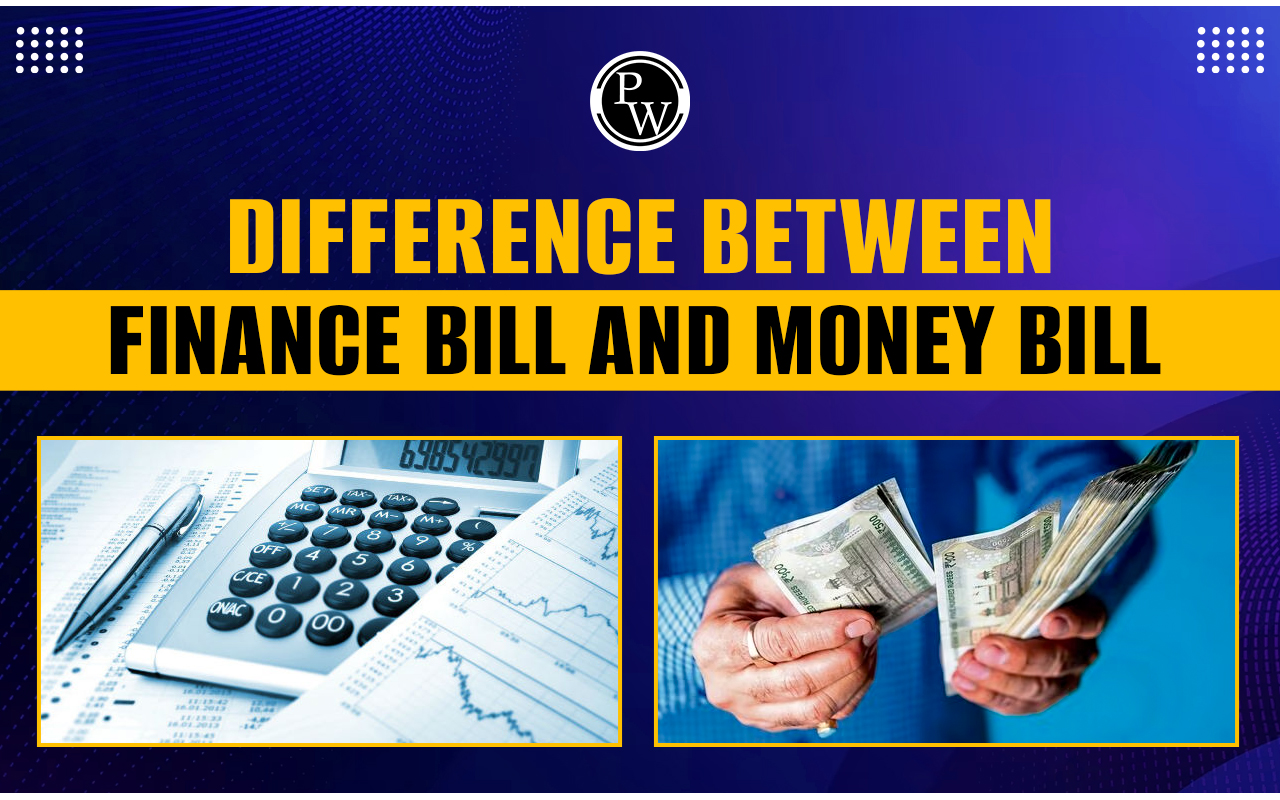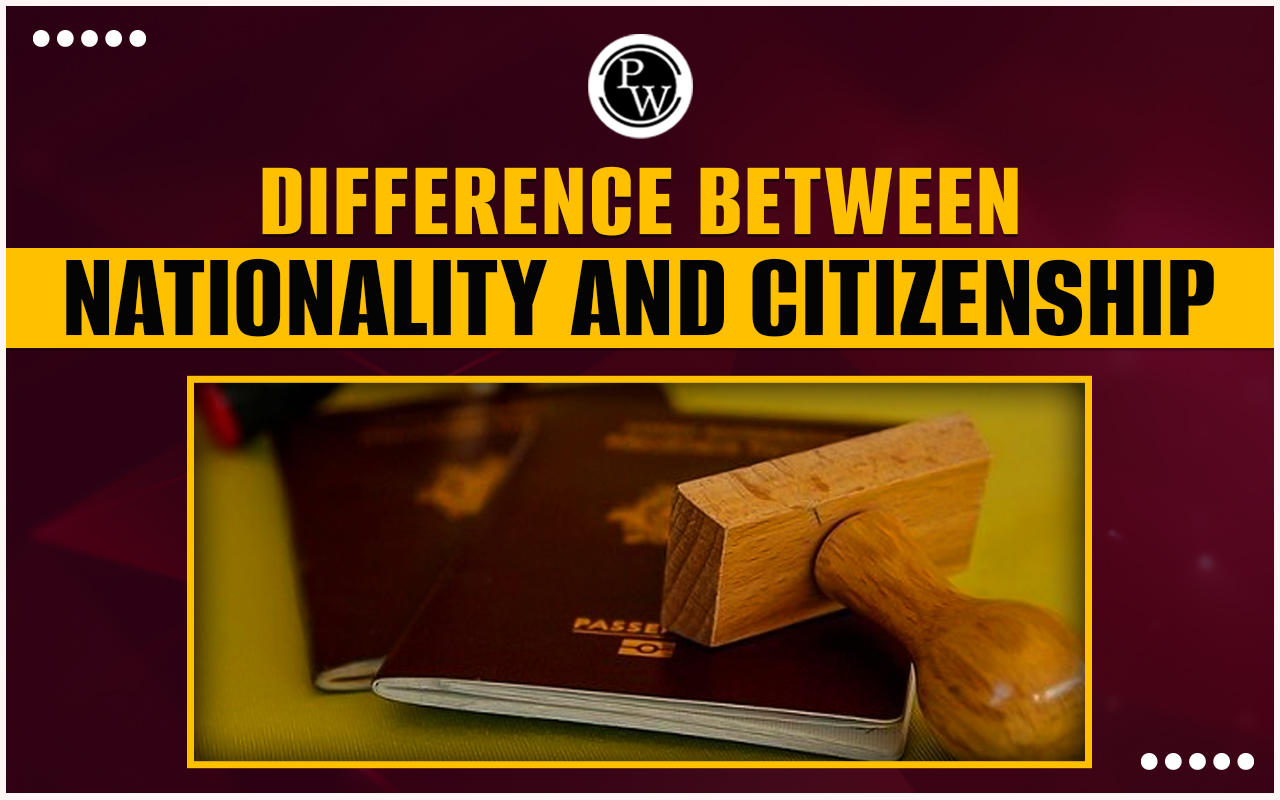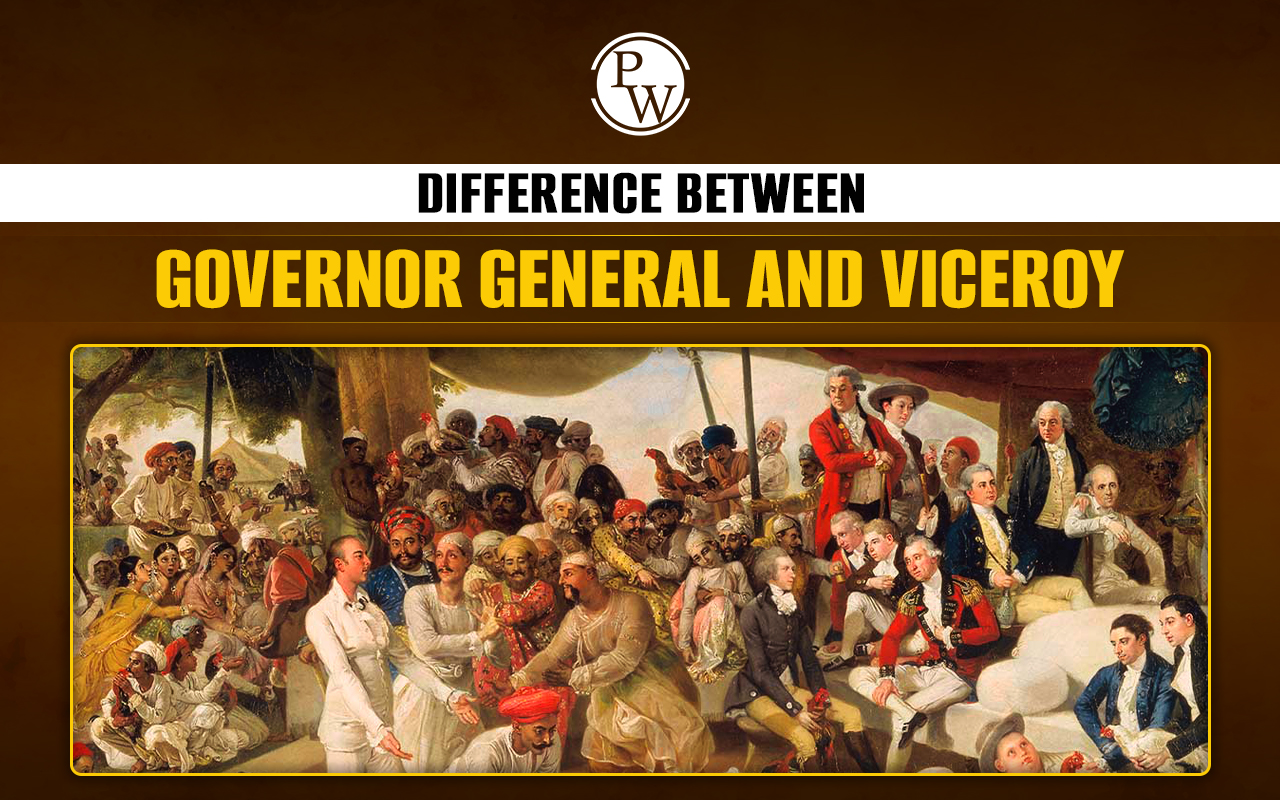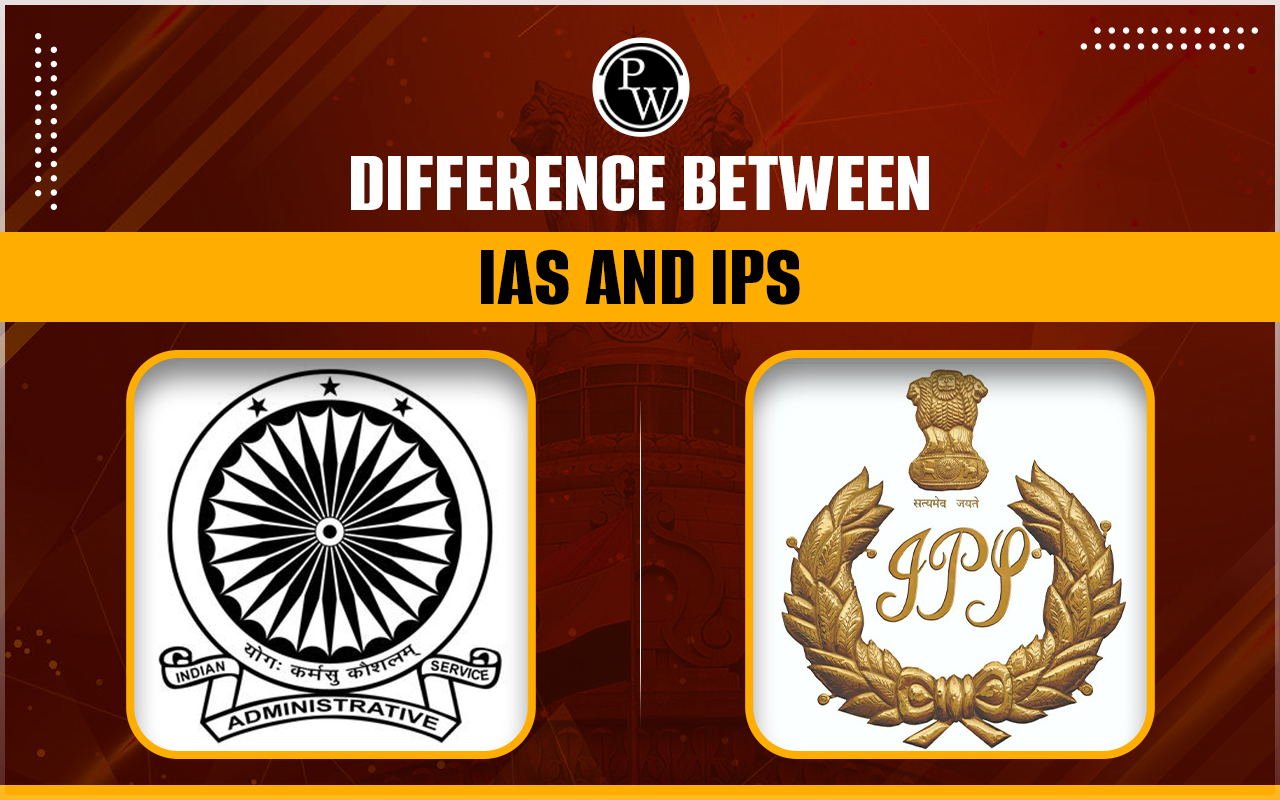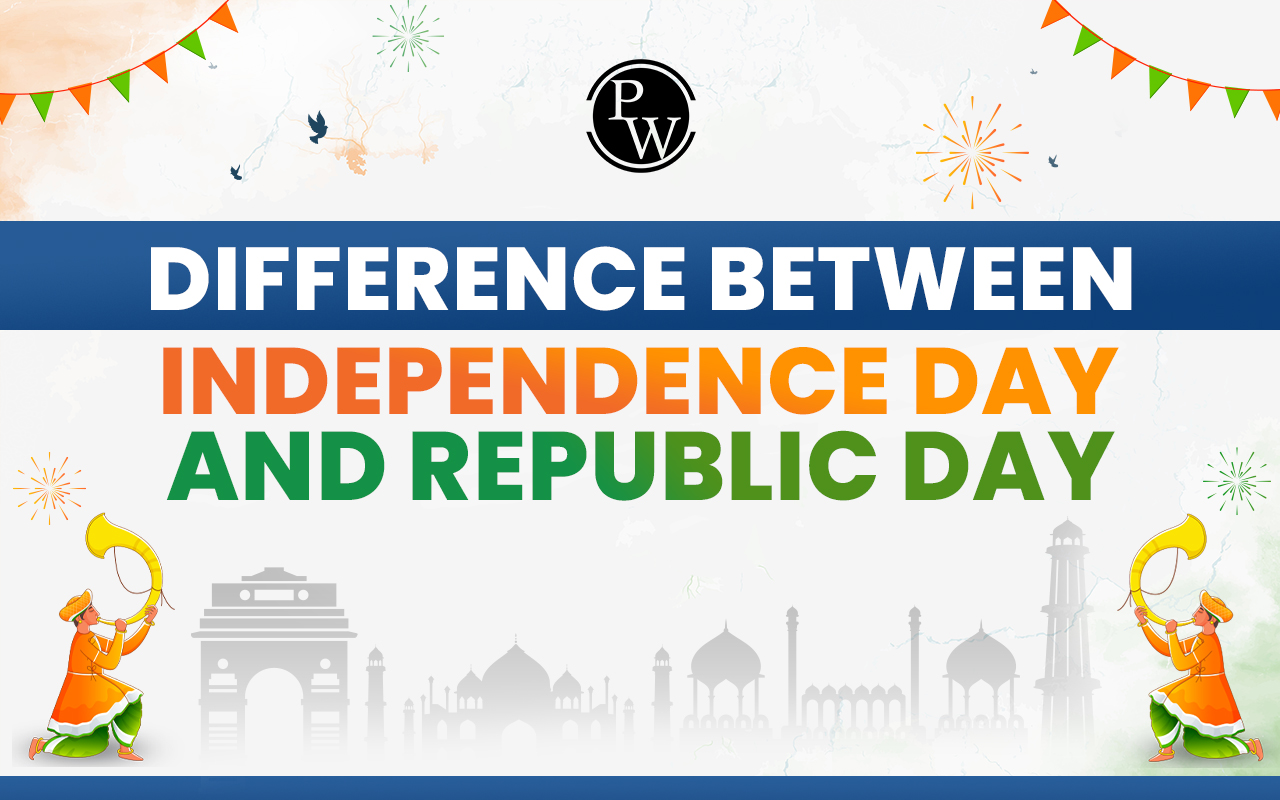
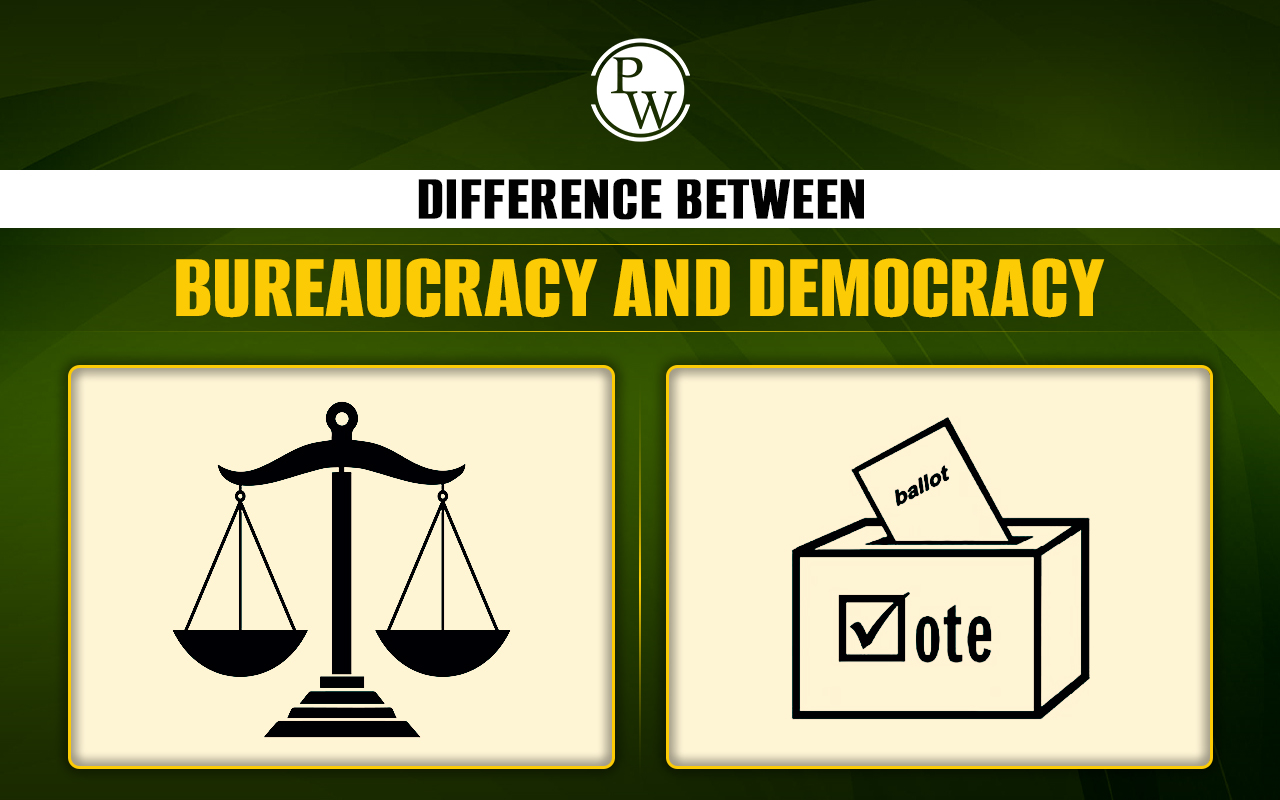
Difference Between Bureaucracy and Democracy: Bureaucracy and Democracy are two fundamental concepts in governance that play distinct but interconnected roles. Democracy is a system of government in which power rests with the people, who elect representatives to make decisions on their behalf, ensuring participation, accountability, and transparency.
Bureaucracy, on the other hand, refers to the administrative machinery of the government, responsible for implementing policies, managing public services, and ensuring the smooth functioning of the state. Understanding the difference between these two helps clarify how policy-making and administration operate within a political system.
Difference Between Bureaucracy and Democracy
The administrative structure of a country depends heavily on the interplay between its democratic principles and its bureaucratic functions. While both are necessary for governance, they differ significantly in their operation, purpose, and relationship with the public.
Below is a comparison of the key differences between Bureaucracy and Democracy:
|
Difference Between Bureaucracy and Democracy |
||
|
Feature |
Bureaucracy |
Democracy |
|
Selection/Appointment |
Bureaucrats are selected through established procedures/exams. |
Leaders are elected by the people through free and fair elections. |
|
Public Representation |
Officials are generally not considered public representatives. |
Leaders are directly considered public representatives. |
|
Tenure |
Tenure is fixed until the age of retirement. |
Tenure is fixed (e.g., up to five years in India); leaders must seek re-election. |
|
Mandate/Role |
Primarily mandated to implement the laws and policies. |
Mandated to make or formulate the laws and policies. |
|
Public Opinion |
Little importance is given to public opinions; a directive approach is prevalent. |
Great importance is given to public opinions; a consultative approach is used. |
|
Freedom of Expression |
Does not grant freedom of expression within the administrative hierarchy. |
Grants and upholds the fundamental freedom of expression for citizens. |
|
Structure & Approach |
Highly focused on Hierarchy and Centralisation (top-down approach). |
Based on values like Equality, Republicanism, and Federalism. |
|
Accountability |
Provides greater accountability to the system and rules. |
Accountability is important but can be complex and sometimes lacking. |
Understanding Bureaucracy and Democracy
To properly analyze the contrasting features, aspirants must first understand the individual meanings of these two terms.
What is Bureaucracy?
The term Bureaucracy refers to both the body of unelected government officials and the administrative policy-making group that manages public administration in many countries. It is essentially a centralized system of management.
-
Definition: A structure and set of rules in place to manage large organizations, like government departments.
-
Key Feature: Bureaucrats are generally selected through established procedures and exams, not through public elections. Their primary job is to administer and implement the laws and policies created by the elected government.
-
Accountability: Bureaucracy is often described as having high accountability to the system, focusing on adherence to rules and fixed procedures.
What is Democracy?
Democracy is a form of government where the people hold the authority to choose their governing legislation and elect their representatives. The word itself originates from the Greek words Demos (people) and Kratos (rule), meaning "rule by the people."
-
Definition: A system based on the principles of Equality, Federalism, and Republicanism, where power ultimately resides with the citizens.
-
Key Feature: Leaders are elected through free and fair elections, making them public representatives who formulate and make laws.
-
Core Values: Democracy values freedom of expression and prioritizes public opinions in policy-making through a consultative approach.
Relationship Between Democracy and Bureaucracy
While they differ in nature, bureaucracy and democracy share a vital and often complex relationship. Bureaucracy acts as the administrative backbone of the democratic state.
-
Implementing the Will of the People: In a democracy, the elected representatives formulate policies that reflect the will of the people. It is the bureaucracy's job to take those policies and turn them into tangible actions on the ground.
-
Increased Effectiveness: The relationship lies in the way increased bureaucratic regulation can lead to increased governmental effectiveness. A skilled, permanent, and efficient bureaucracy ensures the continuity and stability of services, regardless of which political party is in power.
-
The Tension Point: The major challenge arises from the fact that bureaucrats are unelected officials with fixed tenures, while democratic leaders are elected representatives with limited tenures. This can sometimes lead to tension, where the permanent administrative structure might resist or slow down rapid changes proposed by the temporary political leadership. However, both must work in tandem for the nation's success.
Difference between Bureaucracy and Democracy FAQs
What is Democracy?
What is Bureaucracy?
How do Democracy and Bureaucracy differ?
Can Bureaucracy exist in a Democracy?
What is the main purpose of Democracy?


